Creamy, silky and smooth Swiss Meringue Buttercream is the perfect frosting for cupcakes, layered cakes and other baked goods. Not overly sweet, light, stable at room temperature and so much better tasting than American buttercream!
We love Swiss Meringue Buttercream frosting in desserts like this irresistible light and fluffy Pink Champagne Cake!
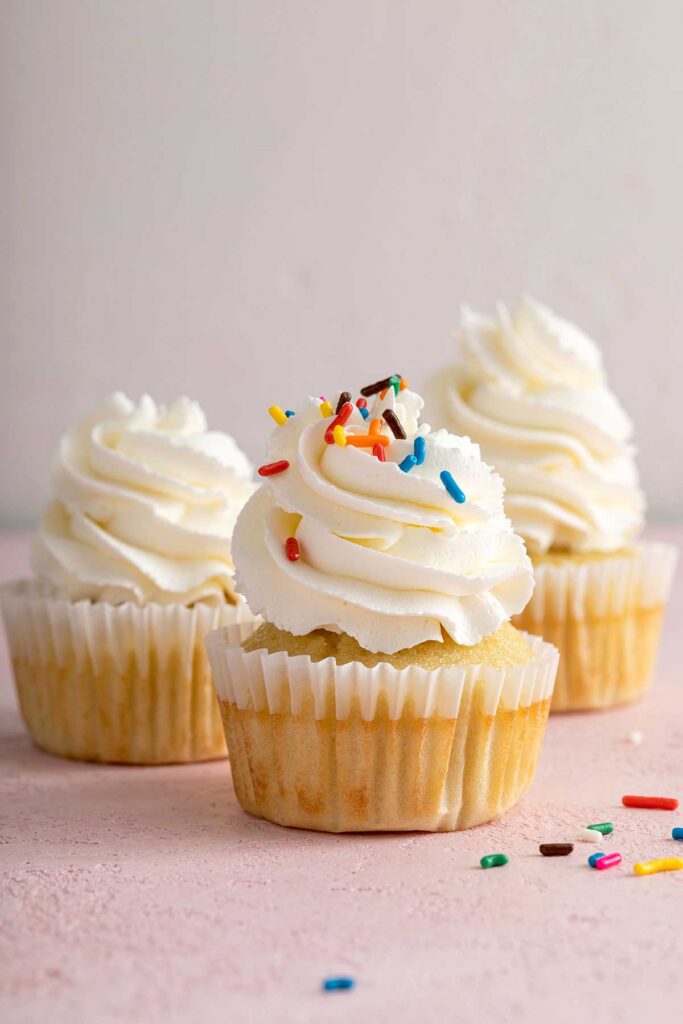
Swiss Buttercream
This easy Swiss Meringue Buttercream recipe is made with only 5 ingredients and produces a light and fluffy vanilla frosting that can be piped effortlessly on cakes and cupcakes. The bright white color of this buttercream makes this a perfect frosting to tint with food gels, making cake decorating projects more beautiful .
Why This Frosting Recipe Works?
- Spreads smoothly and pipes beautifully making cake decorating a breeze!
- It’s not overly sweet.
- Tastes better than other types of homemade buttercream and is far superior in quality and taste than store bought canned frosting.
- Using a double boiler guarantees that the egg whites are safe to consume and completely cooked.
- Swiss buttercream frosting is stable at room temperature.
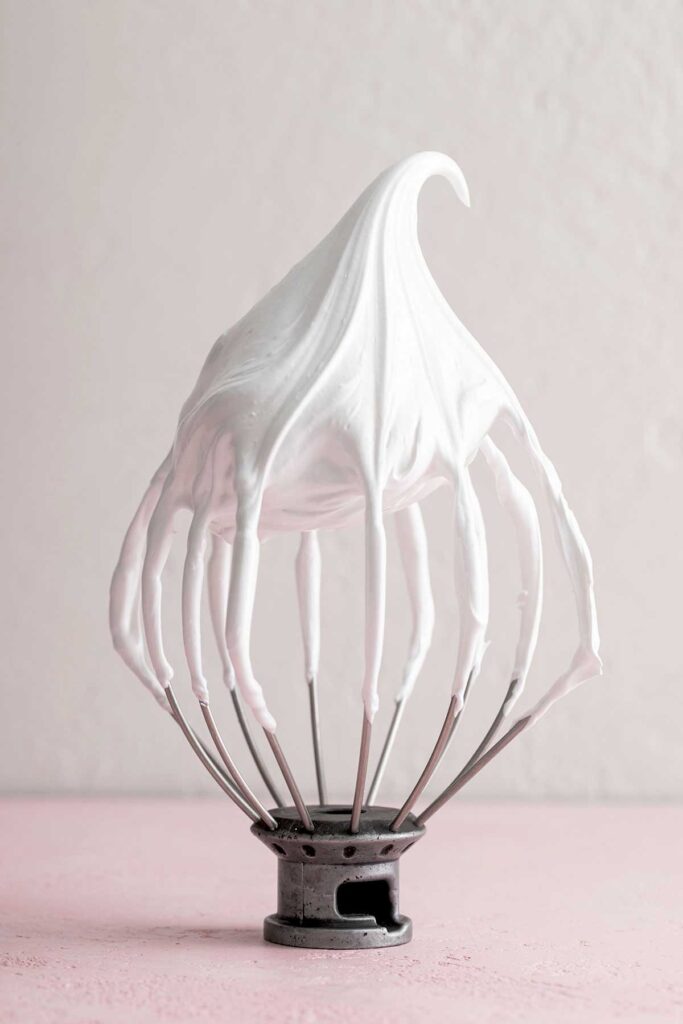
What Is Swiss Meringue Buttercream
Swiss Meringue Buttercream is a type or style of frosting similar to Italian buttercream. It is a stable buttercream made with egg whites cooked in a double boiler with sugar, butter and flavorings and whipped to a stiff but creamy consistency. This is one of the easiest buttercream recipes and one of the best tasting ones. Swiss buttercream is a popular frosting to decorate layered cakes as it spreads smoothly and can be piped into intricate decorations.
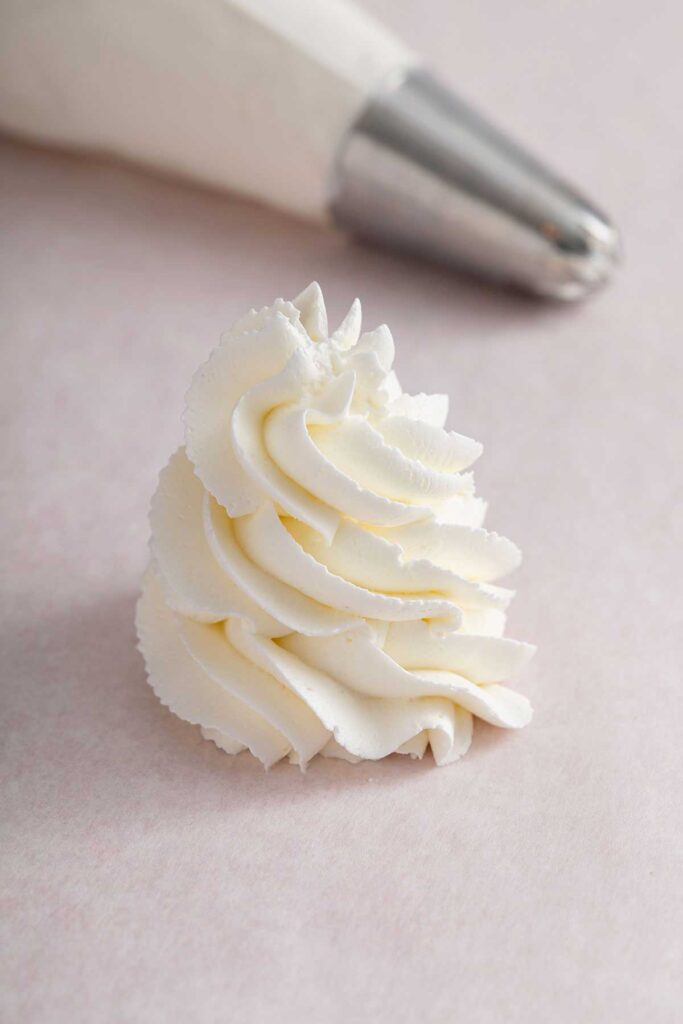
Swiss Buttercream Ingredients
- Egg Whites: Using fresh eggs is a must. Egg whites from a carton should be avoided.
- Sugar: Use granulated sugar.
- Butter: Unsalted butter is best when making this recipe.
- Flavorings: Vanilla extract (or any other flavor of your choice) and salt. I prefer sea salt or Kosher salt.
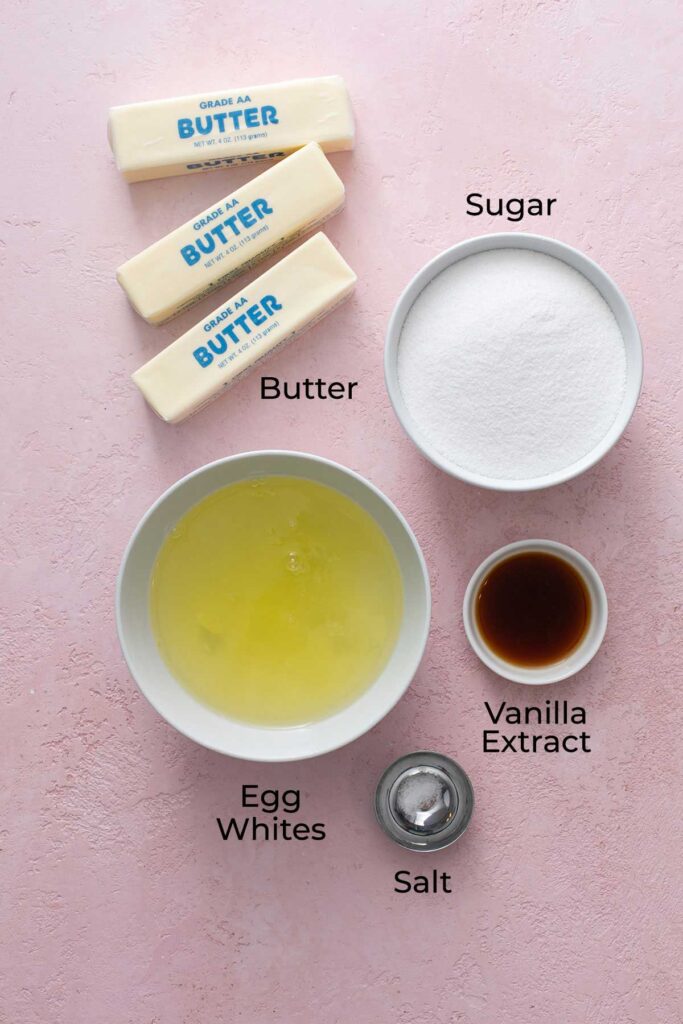
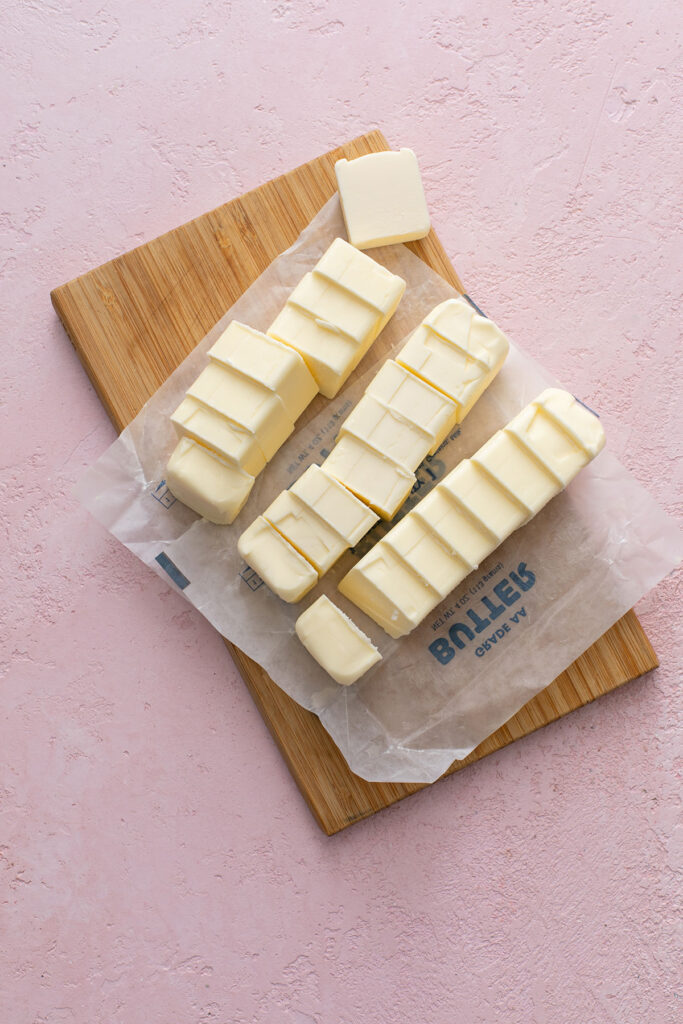
How to Make Swiss Meringue Buttercream
This is an overview of how to make this recipe. For detailed instructions, check the recipe card below.
Clean the Mixing Bowl: Wipe clean the mixing bowl with a clean towel or with paper towels to remove any grease or oils. Grease prevents the meringue from setting.
Set Up a Double Boiler: Use a double boiler or set one up by placing a mixing bowl over a pot filled with about 1 – 2 inches of simmering water.
Heat the Eggs Whites and Sugar: Whisk the egg whites and the granulated sugar briefly in the mixing bowl and place it over the pot of simmering water. Make sure that the bottom of the mixing bowl doesn’t touch the water.
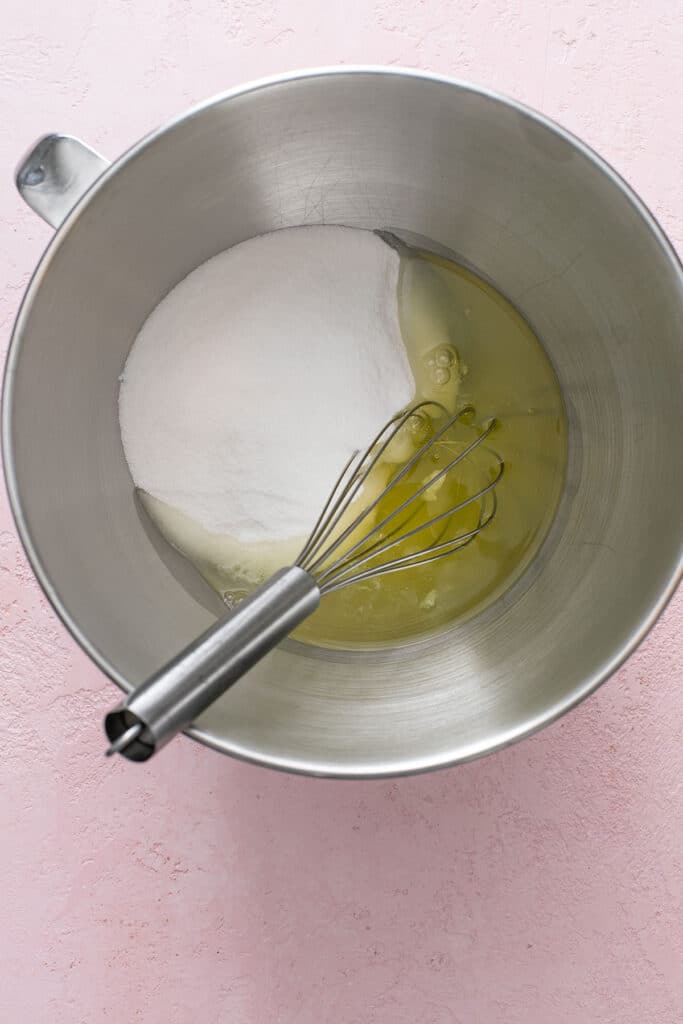
Whisk to Dissolve the Sugar: Whisk the egg whites and sugar constantly until the sugar is dissolved. To know when itis ready, you can check the temperature with a thermometer – the internal temperature should reach 160 degrees Fahrenheit (71° C). If you don’t have a thermometer, check by dipping two fingers into the mixture and rubbing them together. The mixture should be warm and smooth and you should not feel any sugar granules remaining.
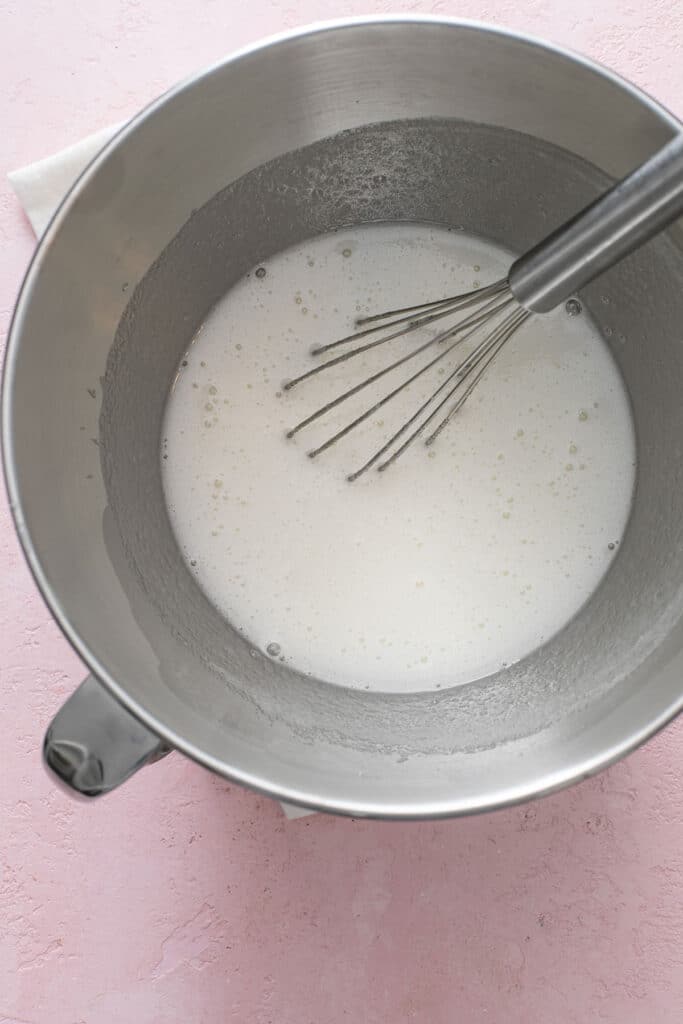
Whisk Meringue to Stiff Peaks: Using an electric mixer or stand mixer fitted with the whip attachment, whip the egg whites until stiff peaks form. At this point, the mixture should not be warm to the touch.
Before adding the butter, make sure that the egg mixture is no longer warm. The mixture should be at around 70° degrees Fahrenheit (21 C) or room temperature.
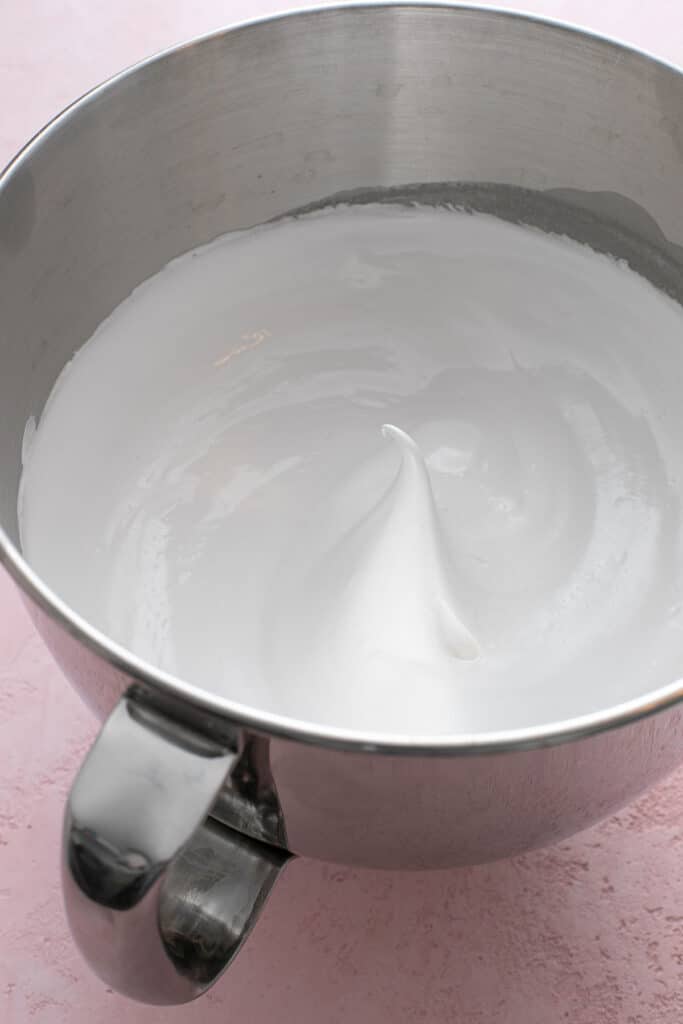
Add the Butter and Flavorings: If using a stand mixer, switch to the paddle attachment. With the mixer on low speed, start adding the room temperature butter, one tablespoon at a time allowing the butter to fully incorporate before adding more. Finally, beat in the vanilla extract and salt.
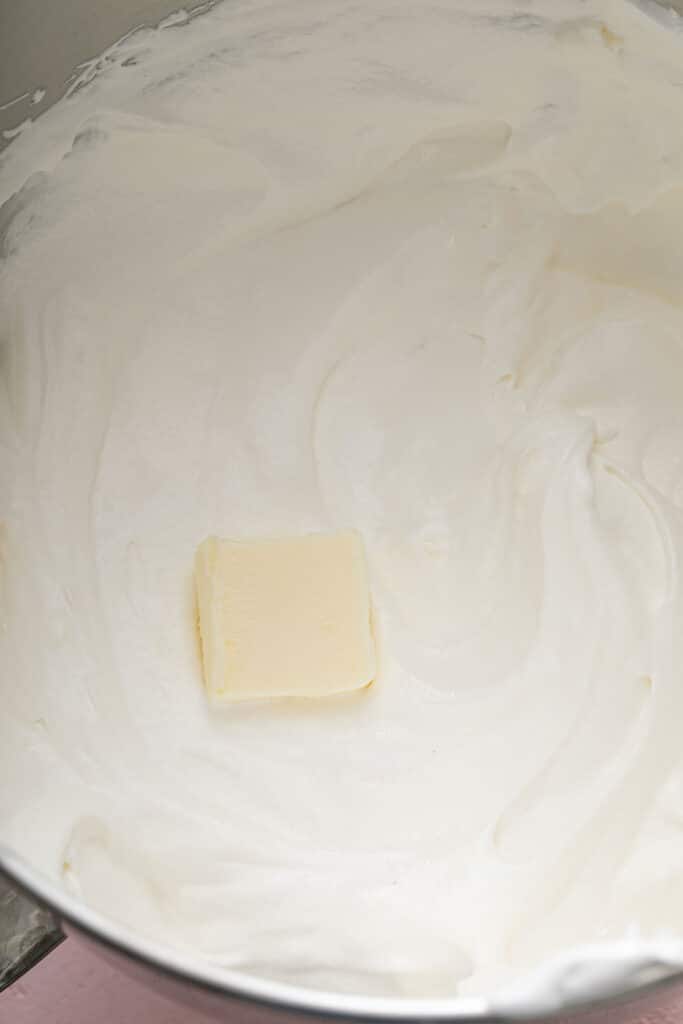
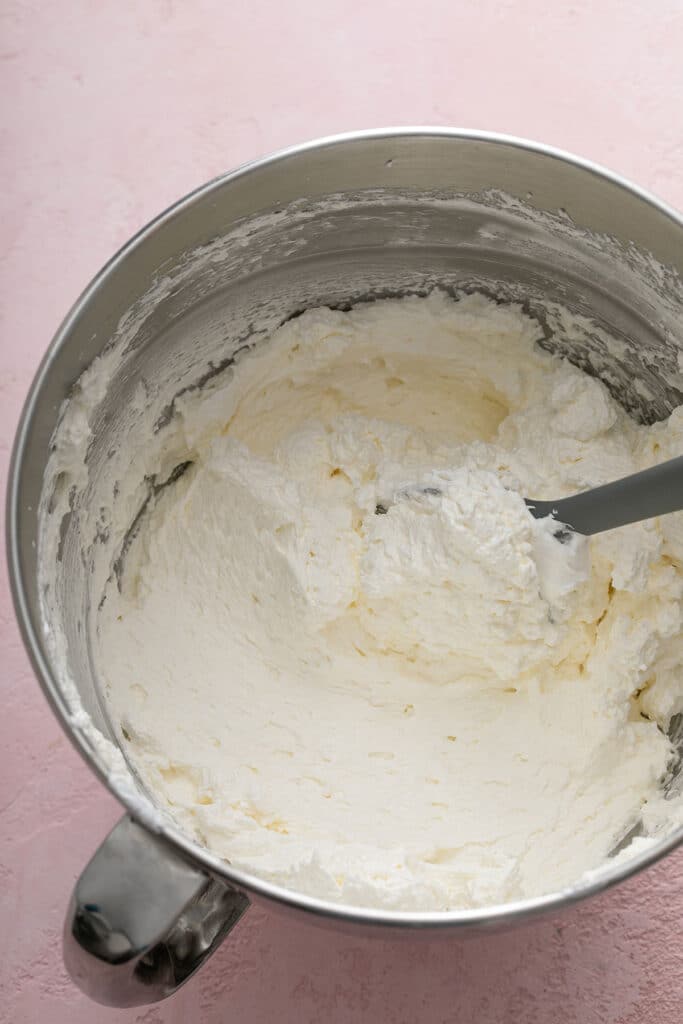
What is the Difference Between Swiss Meringue Buttercream and Buttercream?
Swiss Meringue Buttercream is less sweet than the classic American buttercream frosting and also more stable. It won’t form a crust and its color is a brighter white which means that tinting it with food color results in bright and beautiful colors that pop.
Is Swiss Meringue Buttercream Supposed to Taste Like Butter?
This type of buttercream has a good amount of butter so it will definitely taste like sweet butter; however, the butter taste should not be overpowering. To prevent this frosting from tasting like straight butter, make sure you use unsalted butter and good quality vanilla extract (or any other extract). A greasy mouthful taste usually means that the buttercream is too cold.
Is Swiss Buttercream Safe to Eat
Yes, if made properly, SMB is safe to eat even for women that are pregnant. The egg whites in the buttercream cook over a double boiler so they are not served raw.
Can You Freeze Swiss Buttercream Frosting
Yes, Swiss meringue buttercream freezes well. Store it in a resealable container and freeze it for up to 3 months. Thaw it out at room temperature on your kitchen counter. When thawed completely, place the frosting in the bowl of an electric mixer and whip it up until creamy and smooth.
How Long Can You Keep Swiss Meringue Buttercream
You can keep Swiss meringue buttercream frosting at room temperature for about 2 days, then it keeps in the refrigerator for about 5 more days (a week if placed in the fridge right away!), and in the freezer for 3 months.
Can You Over Whip Swiss Meringue Frosting
No. This type of buttercream is incredibly sturdy and can withstand over whipping as well as changes in temperature (frozen / warm). Fixing any issues that may arise is also quite easy. SMB is perfectly smooth and creamy when its temperature is between 72 and 74 degrees Fahrenheit.
A loose, droopy or thin frosting means that the ingredients are not cold enough and a thick and stiff frosting that feels and tastes greasy means the buttercream is too cold. A few minutes in the fridge or placing the frosting in a bowl set over simmering water can fix most issues (including a broken buttercream).
Swiss Meringue Buttercream Pros and Cons
SMB Frosting Pros:
- Less sweet than American buttercream.
- Swiss Buttercream is stable and can be made ahead of time. It keeps at room temperature for about 2 days, stored in the refrigerator for about a week and in the freezer for 3 months.
- This flavorful and smooth buttercream holds very well making it the perfect frosting to use when covering and piping layered cakes, cookies, wedding cakes, etc. Unlike other frostings, SMB doesn’t dried up or look crusty.
- Add different flavorings like chocolate, raspberries, strawberries, citrus zests, etc.
- It can be used under fondant.
- This recipe is sturdy and hard to mess up!
SMB Frosting Cons:
- Although easy to make, it takes a bit of patience and time to make it properly.
- You must pay especial attention to the temperature of the ingredients to guarantee a smooth, creamy and silky consistency.
- It may require a kitchen thermometer which can be a bit intimidating to beginner bakers.

Troubleshooting Swiss Meringue Buttercream
Meringue Is Grainy:
When making the meringue, you whisk the egg whites and the sugar over a pot of simmering water until the sugar completely dissolves. Not spending enough time dissolving the sugar crystals will result in grainy meringue.
Meringue Won’t Reach Stiff Peaks:
After several minutes of mixing, the egg white meringue should reach stiff peaks. Stiff peaks look glossy and stand firm without sagging or drooping. Here are some of the potential problems:
- Not whipping the egg whites long enough or at a high enough speed for several minutes can cause the issue. On the other hand, over whipping can make the meringue go past the stiff peak phase and become grainy.
- The problem could be that your mixing bowl or whisk had grease residue or that a small amount of egg yolk got into the egg whites. Egg yolks contain fat and will prevent meringue from getting stiff.
- Another issue could be that the mixing bowl or whites are too warm.
Buttercream is Thin, Runny or Soupy:
This is due to heat and can be fixed by cooling the buttercream. Simply place the mixing bowl in the fridge for 10 to 20 minutes to lower the temperature of the frosting and then re-whip!
- Make sure that your kitchen is not too hot. This is especially a problem for small apartments during summertime.
- If your mixing bowl is made of glass or ceramic, it could retain heat from the water bath causing the frosting to be runny.
- Make sure the butter is softened but somewhat cool to the touch. If your butter is melting, it it too hot.
Buttercream Looks Curdled:
If your frosting looks more like scrambled eggs or cottage cheese, you are doing everything right! Swiss meringue buttercream usually goes through a phase when it looks as if it has separated. This is normal and will fix itself if you just keep beating it. This can happen when you add additional ingredients like extracts or flavorings also.
Buttercream is Thick, Stiff or Heavy:
This happens when the frosting is too cold. Place the mixing bowl over simmering water (double boiler or water bath) to raise the temperature.
- Thick buttercream happens during wintertime if your kitchen is too cold.
- Make sure that the butter is not too cold or just out of the fridge.
- If you kept the buttercream in the freezer, thaw it completely to prevent stiffness. I recommend that you whip it again as well.
Swiss Meringue Buttercream Recipe Tips
- Use fresh egg whites not carton egg whites.
- Wipe the mixing bowl clean before you whip the egg whites.
- Make sure your egg whites don’t have any yolks.
- If your meringue looks curdled or separated after adding the butter, simply keep beating it. The mixture will reincorporate and become smooth again.
- This type of buttercream is pretty sturdy and can be fixed simply by adjusting its temperature. If it’s too soft, thin or even runny, refrigerate the mixture for a few minutes (This usually happens during the summer months especially if your kitchen is small or have big windows that take in the heat. Stiff or curdled buttercream may need to be put on top of the double boiler again for a couple of minutes to get a bit warm so it can reach the right temperature (Between 72 and 74 degrees Fahrenheit for creamy and smooth buttercream.
Take A Look At Some of Our Best Dessert Recipes:
Email me this recipe for later!

Swiss Meringue Buttercream
Ingredients
- 6 egg whites (from large eggs)
- 2 cups granulated sugar
- 1 1/2 cups unsalted butter, cut into tablespoons pieces and softened (3 sticks)
- 2 teaspoons pure vanilla extract
- 1/8 teaspoon salt
Instructions
- Wipe clean the mixing bowl with a clean towel or with paper towels to remove any grease or oils. Grease prevents the meringue from setting.
- Use a double boiler or set one up by placing a mixing bowl over a pot filled with about 1 – 2 inches of simmering water at medium-low heat.
- Place the egg whites and sugar in a heatproof mixing bowl (for convenience, use your stand mixer bowl). Make sure the bottom of the bowl doesn’t touch the simmering water.
- Whisk the egg whites occasionally while it warms up. When the mixture has warmed, whisk it constantly until the sugar is completely dissolved and no longer grainy to the touch about 3-4 minutes. You can also check the internal temperature with an instant read thermometer. The mixture should reach an internal temperature of 160 degrees Fahrenheit.
- Transfer the mixture to the bowl of a stand mixer (unless you are already using it) fitted with the whisk attachment or use a handheld mixer. Beat the mixture over medium-high speed until stiff glossy peaks form and the mixture is no longer warm, about 10 minutes.
- Switch the stand mixer to the paddle attachment. With the mixer on medium high speed, add the cubed butter one piece at a time and mix until the butter is fully incorporated before you add more butter.
- Next, add the vanilla and salt and beat for about 40 seconds. The buttercream should be thick and creamy.
Recipe Notes
- Use fresh egg whites not carton egg whites.
- Wipe the mixing bowl clean before you whip the egg whites.
- Make sure your egg whites don’t have any yolks.
- If your meringue looks curdled or separated after adding the butter, simply keep beating it. The mixture will reincorporate and become smooth again.
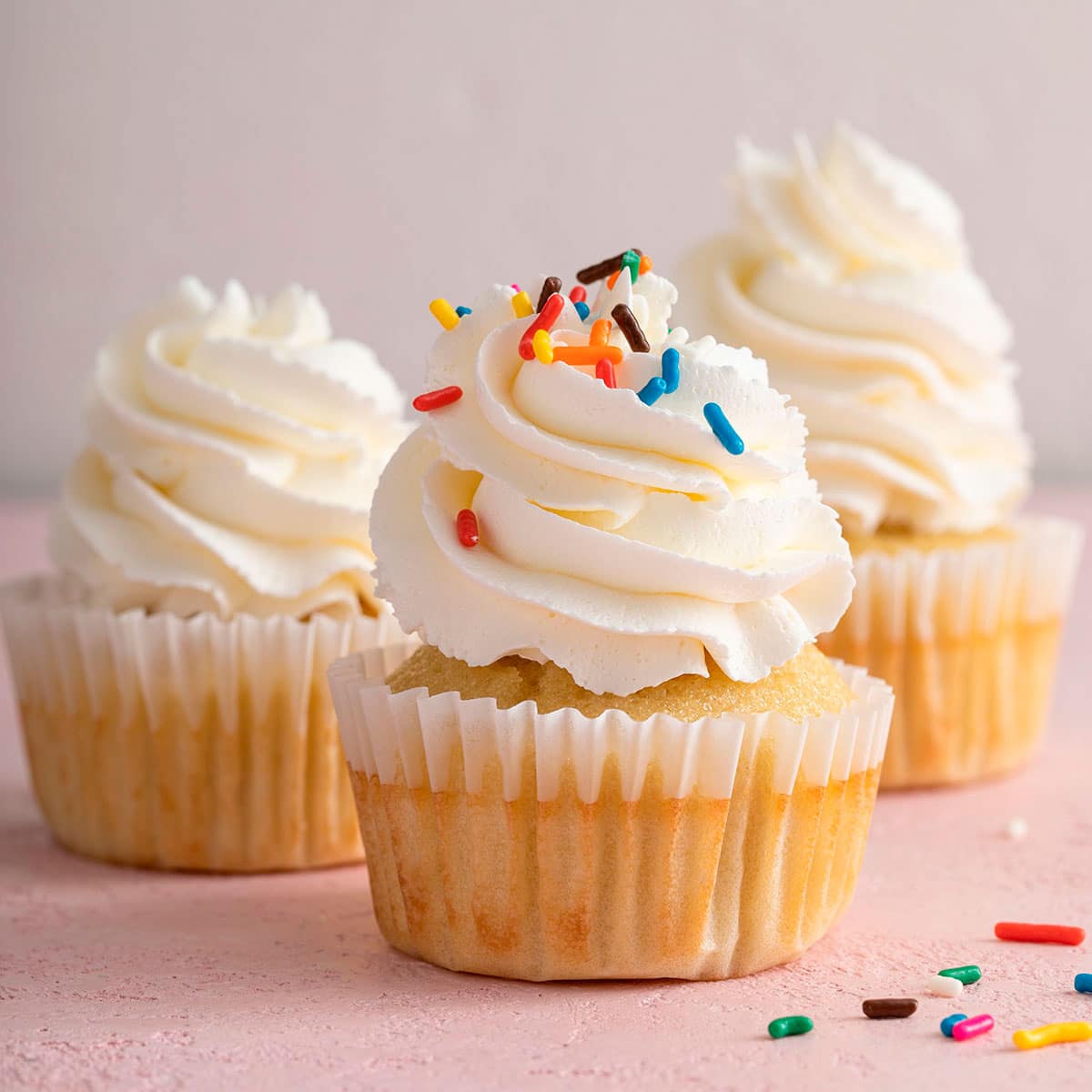











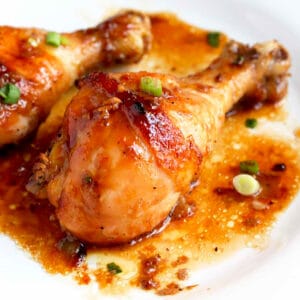

Leave a Reply